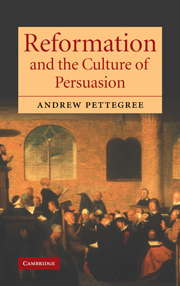1 - The dynamics of conversion
Published online by Cambridge University Press: 04 December 2009
Summary
Why did people choose the Reformation? What was it in the evangelical teaching that excited, moved or persuaded them? How, and by what process, did people arrive at the new understandings that prompted a change of allegiance, and embedded them in their new faith? These are questions central to an understanding of the Reformation movement, but they are far more often approached obliquely than answered directly. We know that Luther and other evangelicals preached a powerful doctrine of redemption and salvation; we know that they conjured a sense that the Reformation would address long-standing discontents about the relationship between clergy and people; and we know that large parts of Europe would ultimately accept the new Protestant churches. But precisely what moved people – either as individuals, or as part of a community – to abandon one allegiance and embrace another is a complex and difficult question.
What we can be certain is that, in the first generation of evangelical agitation, the decision to adhere to the Reformation was often a very painful one. It involved difficult choices and life-changing decisions. It involved exchanging the familiar round of traditional observance for a new order which was untested and largely unknown. It involved accepting the good faith and charismatic authority of preachers who had often emerged from a comparatively lowly position in the local clerical hierarchy, ignoring the counter-charges of those who denounced them as false prophets.
- Type
- Chapter
- Information
- Reformation and the Culture of Persuasion , pp. 1 - 9Publisher: Cambridge University PressPrint publication year: 2005

